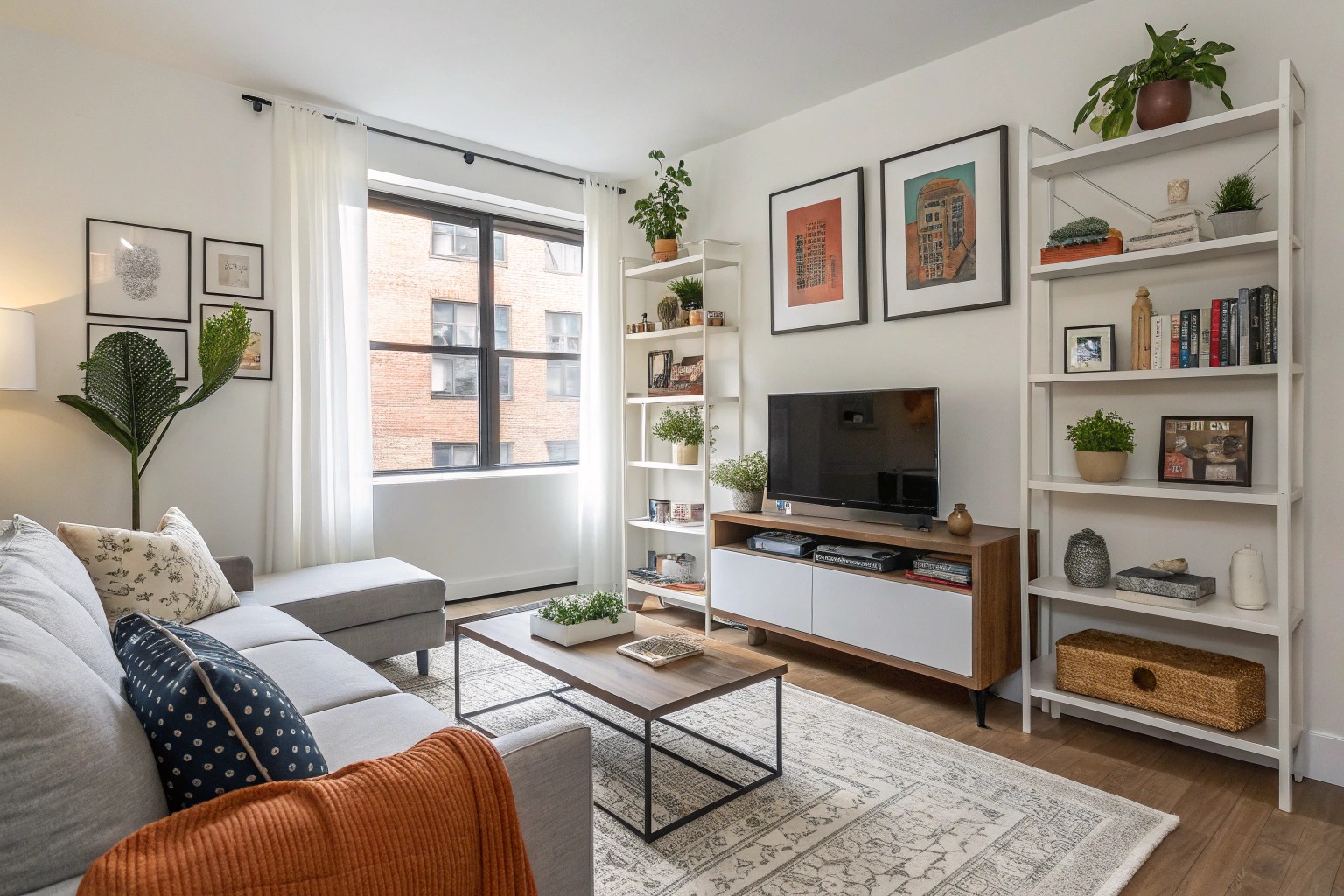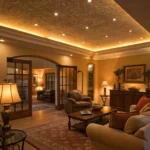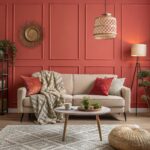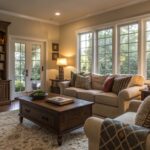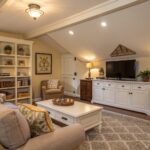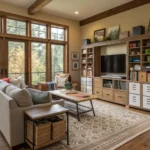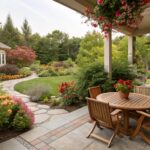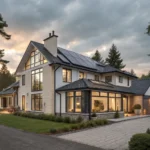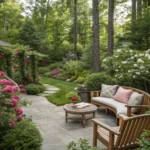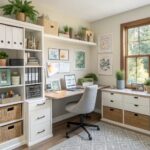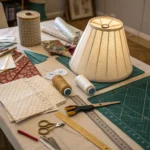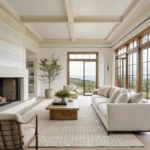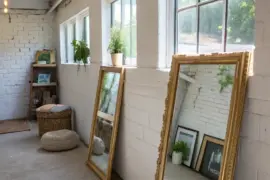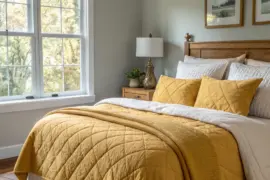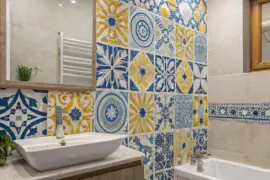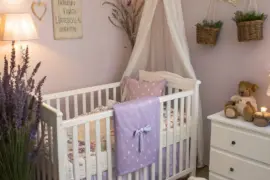Creating a sophisticated living space that reflects your growing maturity doesn’t require a designer budget or a complete furniture overhaul. Through strategic choices in color, lighting, and multifunctional pieces, you can transform even the most basic college apartment into a space that feels intentionally curated rather than hastily assembled.
Strategic Foundation Planning
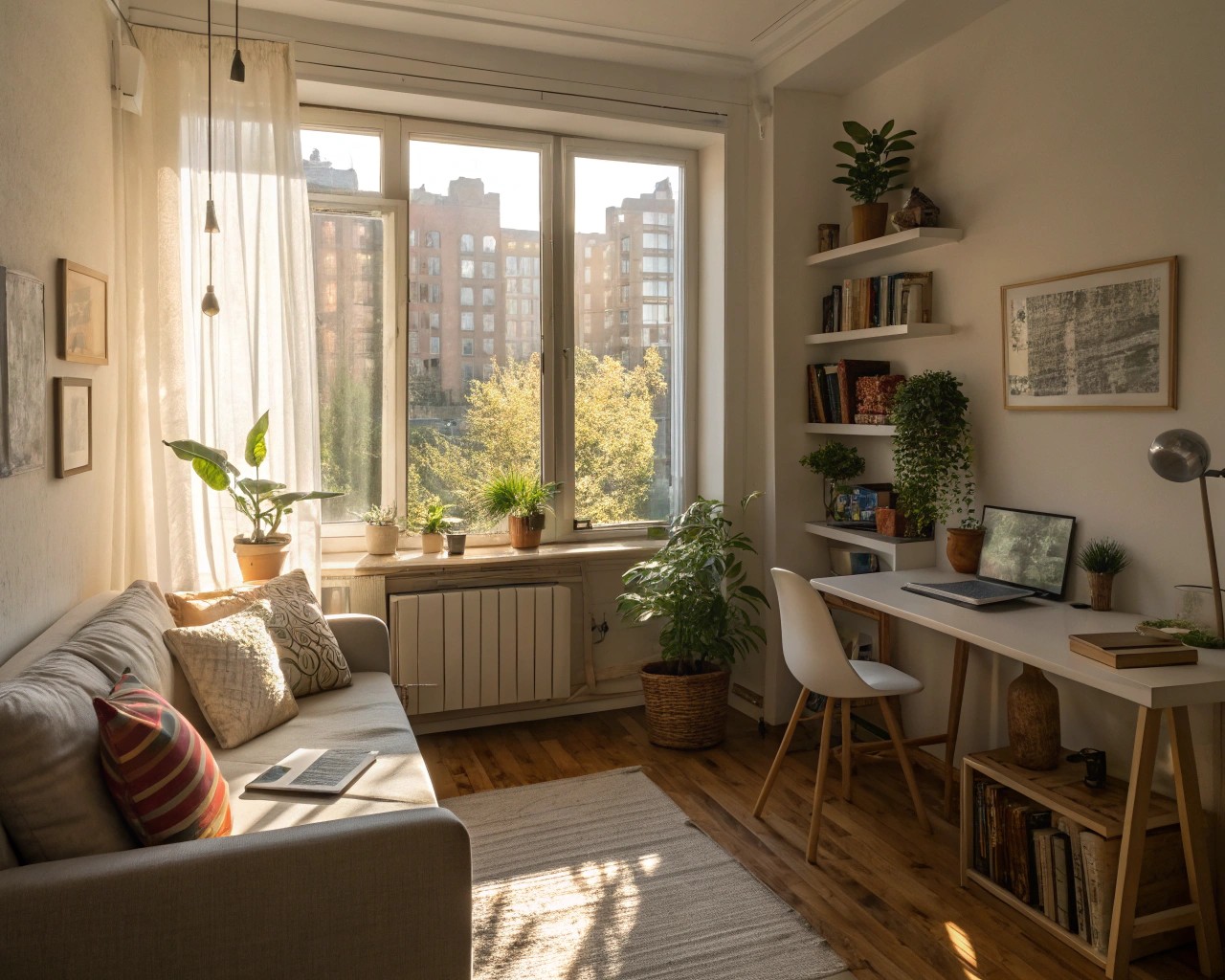
Assess Your Space Honestly
Before making any purchases, take inventory of what you’re working with. Most college apartments present similar challenges: limited square footage, restrictive lease terms, and often uninspiring neutral walls. I’ve found that students who succeed in creating adult-feeling spaces start by identifying their three biggest spatial challenges—whether that’s inadequate storage, poor lighting, or awkward furniture placement.
Key Assessment Areas:
- Natural light sources and direction
- Existing color palette and changeable elements
- Storage capacity versus belongings
- Traffic flow and functional zones
- Lease restrictions on modifications
Establish Your Design Priorities
Rather than trying to address everything at once, focus on the elements that will deliver the most visual impact. Research consistently shows that well-chosen furniture placement, strategic lighting, and cohesive color schemes create the foundation for sophisticated spaces.
Priority Framework:
1. Functionality first: Ensure basic living needs are met efficiently
2. Visual cohesion: Create consistency through repeated colors or materials
3. Quality over quantity: Choose fewer, better pieces rather than filling every corner
4. Personal expression: Include elements that reflect your individual style
Adult-Level Furniture Strategies
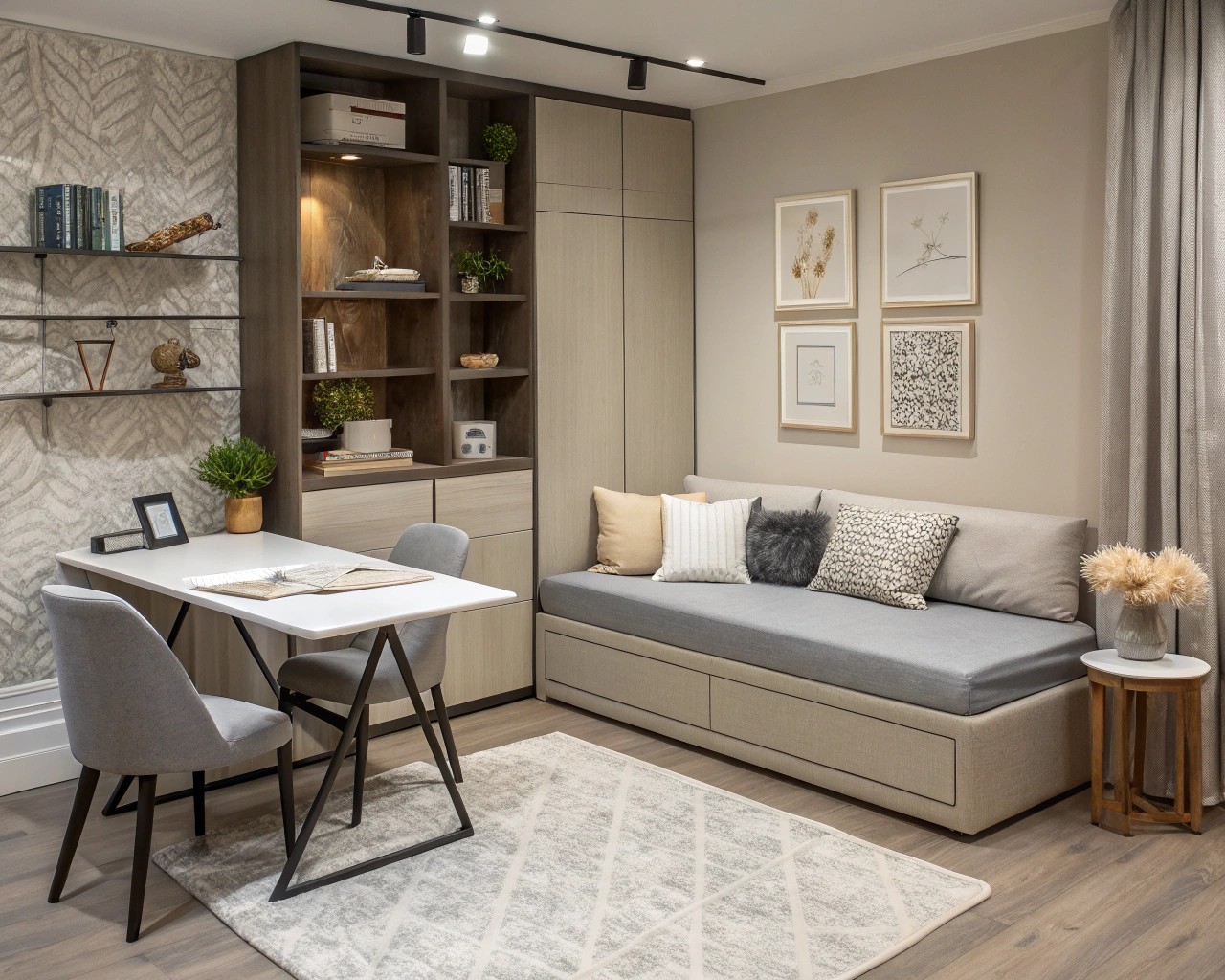
Embrace Multifunctional Design Principles
The difference between dorm-style and adult furniture often lies in purposeful selection rather than price point. Multifunctional pieces serve as the backbone of sophisticated small-space living. Instead of viewing limitations as constraints, treat them as design parameters that encourage creativity.
Essential Multifunctional Pieces:
| Furniture Type | Dual Function | Adult Appeal Factor |
|---|---|---|
| Ottoman with storage | Seating + hidden storage | Clean lines, no visible clutter |
| Bed frame with drawers | Sleep + clothing storage | Eliminates need for separate dresser |
| Nesting tables | Multiple surfaces + space-saving | Sophisticated when not all deployed |
| Bench seating | Dining + storage + room divider | Creates defined zones in studios |
Choose Furniture That “Floats”
One of the most effective ways to create visual sophistication is selecting furniture with legs that lift pieces off the floor. This design principle, common in mid-century and contemporary furniture, creates the illusion of more space while maintaining an uncluttered aesthetic.
When I work with clients in small spaces, we consistently see that furniture sitting directly on the floor tends to make rooms feel cramped and heavy. The visual breathing room underneath elevated pieces creates a sense of openness that’s particularly valuable in compact apartments.
Elevated Furniture Benefits:
- Easier cleaning and maintenance
- Creates visual lightness in the space
- Allows for under-furniture storage solutions
- Makes rooms appear larger than actual square footage
Invest in Statement Seating
While it might be tempting to stick with the classic futon, consider how your seating choices impact the overall sophistication of your space. A well-chosen sofa or seating arrangement becomes the room’s anchor point and sets the tone for everything else.
Sophisticated Seating Options:
- Modular sofas: Allow for reconfiguration as needs change
- Accent chairs: Add visual interest and additional seating without bulk
- Built-in bench seating: Creates custom look while maximizing storage
- Quality futons: If budget requires, choose versions with wooden frames and quality mattresses
Color Psychology and Visual Cohesion
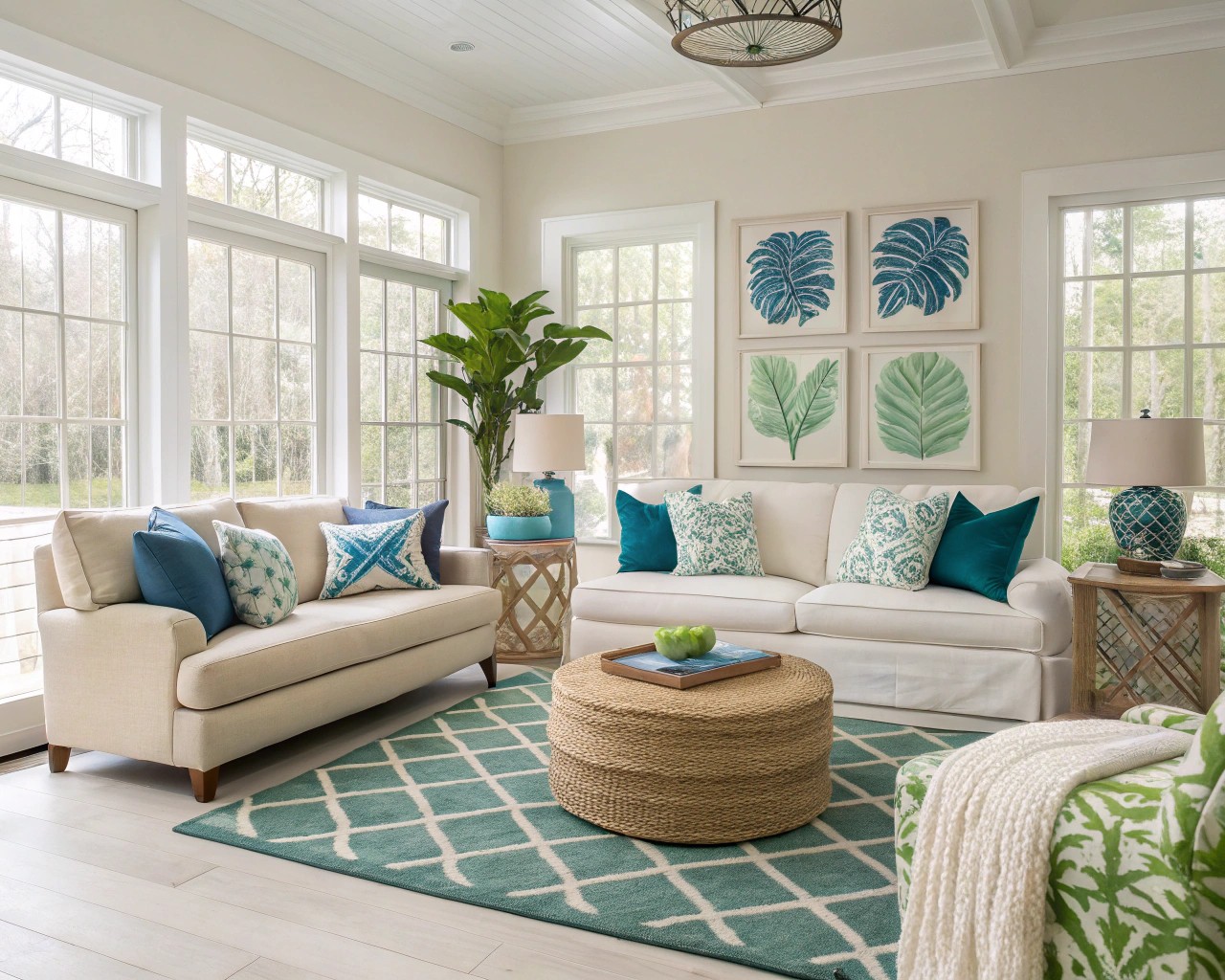
Work Within Lease Limitations
Most rental agreements prohibit wall painting, but this constraint can actually lead to more creative solutions. Instead of viewing white walls as bland, treat them as a neutral canvas that allows your chosen accent colors to shine more vibrantly.
Non-Permanent Color Strategies:
- Removable wallpaper: Apply to accent walls or ceiling areas
- Large-scale artwork: Creates focal points without paint
- Textile color blocking: Use curtains, rugs, and throw pillows strategically
- Plant integration: Natural greens provide color and sophistication
Implement the 60-30-10 Rule
Professional designers rely on this color distribution formula to create balanced, sophisticated spaces: 60% dominant neutral, 30% secondary color, 10% accent color. This approach prevents the overwhelming feeling that comes from too many competing colors while ensuring enough visual interest to feel intentional.
Adult Color Palette Examples:
| Style Direction | 60% Base | 30% Secondary | 10% Accent |
|---|---|---|---|
| Modern Minimalist | Soft gray | White | Black or deep blue |
| Warm Contemporary | Cream/beige | Sage green | Terracotta |
| Urban Sophisticated | Charcoal | Light blue | Brass/gold accents |
Strategic Use of Mirrors and Lighting
The fastest way to elevate any space is through thoughtful lighting design. Most college apartments rely heavily on overhead fluorescent fixtures, which create harsh, institutional feelings. Layer different light sources to create depth and warmth throughout your space.
Lighting Layer Strategy:
- Ambient lighting: Table lamps and floor lamps for general illumination
- Task lighting: Desk lamps and reading lights for functional needs
- Accent lighting: String lights or LED strips for atmosphere
- Natural light enhancement: Strategic mirror placement to reflect available daylight
Smart Storage Without Clutter
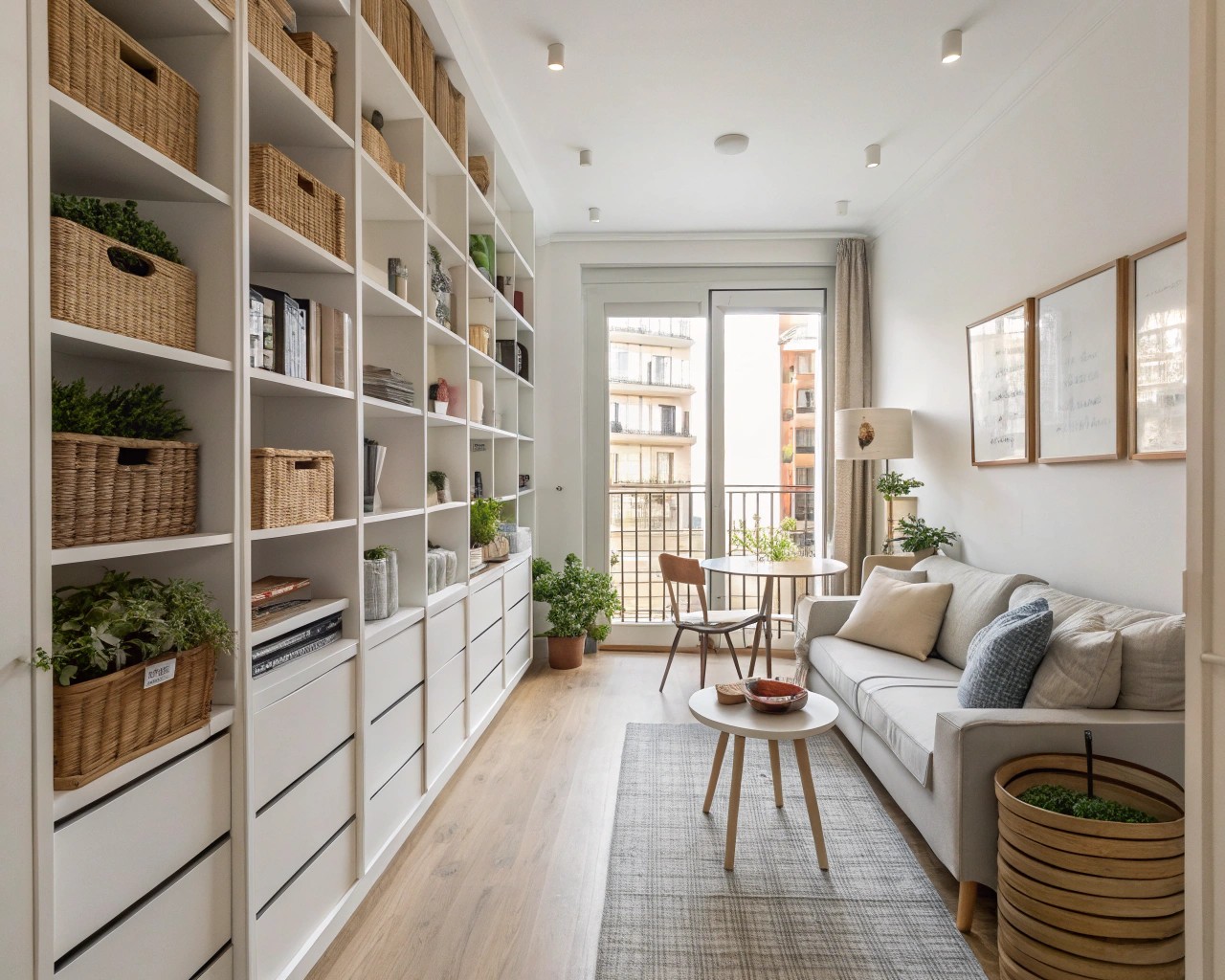
Vertical Space Maximization
Most college students think horizontally about storage, leading to floor clutter and cramped feelings. Successful adult spaces utilize vertical storage extensively, treating walls as valuable real estate for both storage and display.
Vertical Storage Solutions:
- Floating shelves: Create display areas without floor impact
- Wall-mounted organizers: Keep desk areas clean and functional
- Over-door storage: Utilize often-overlooked spaces
- Tall, narrow bookcases: Draw the eye upward while providing storage
Hidden Storage Integration
The key to adult-feeling spaces lies in concealing the necessities of daily life without making them inaccessible. Every piece of furniture should serve multiple purposes, with storage being a primary consideration rather than an afterthought.
Concealed Storage Ideas:
- Bed platforms with drawers: Store out-of-season clothing and linens
- Coffee tables with storage: Hide remotes, magazines, and small electronics
- Decorative baskets: Organize visible storage in attractive containers
- Under-stair solutions: Maximize awkward spaces in multi-level apartments
Organization Systems That Scale
I’ve noticed that students who maintain sophisticated-looking apartments have systems that require minimal daily maintenance. The goal is creating storage solutions that are easier to use correctly than incorrectly.
Low-Maintenance Organization:
- One-touch systems: Items should be stored with single movements
- Visual accessibility: Frequently used items should be visible
- Flexible containers: Storage that adapts as belongings change
- Regular purging schedule: Monthly reviews prevent accumulation
Biophilic Design Elements
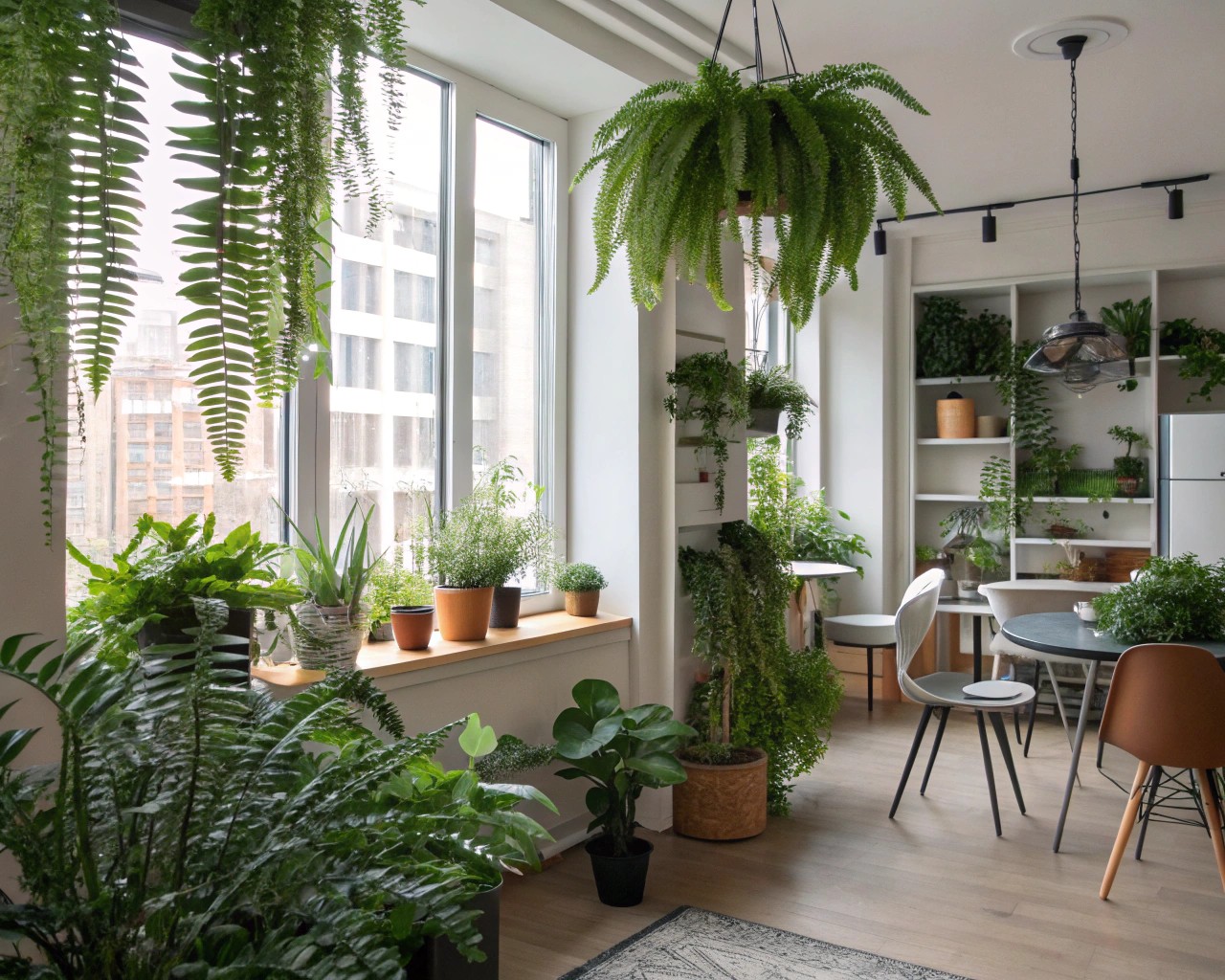
Strategic Plant Selection
Adding living elements instantly elevates any space from institutional to residential. However, success with plants in college apartments requires choosing varieties that thrive in specific conditions: low light, irregular watering, and frequent relocations.
Apartment-Friendly Plant Options:
| Plant Type | Light Requirements | Maintenance Level | Adult Appeal |
|---|---|---|---|
| ZZ Plant (Zamioculcas zamiifolia) | Low to bright indirect | Very low | Architectural, sculptural leaves |
| Golden Pothos | Low to medium | Low | Elegant trailing growth |
| Philodendron varieties | Bright indirect | Low | Classic, sophisticated foliage |
| Monstera deliciosa | Bright indirect | Medium | Statement piece, Instagram-worthy |
Container and Display Strategy
The difference between college plants and adult plants often lies in presentation rather than plant choice. Invest in attractive containers that complement your overall design scheme, treating plants as decorative elements rather than afterthoughts.
Professional Plant Presentation:
- Coordinated containers: Choose planters in consistent materials or colors
- Varied heights: Create visual interest through different plant elevations
- Strategic placement: Use plants to define spaces and soften hard edges
- Maintenance accessibility: Ensure watering and care remain convenient
Room-by-Room Implementation
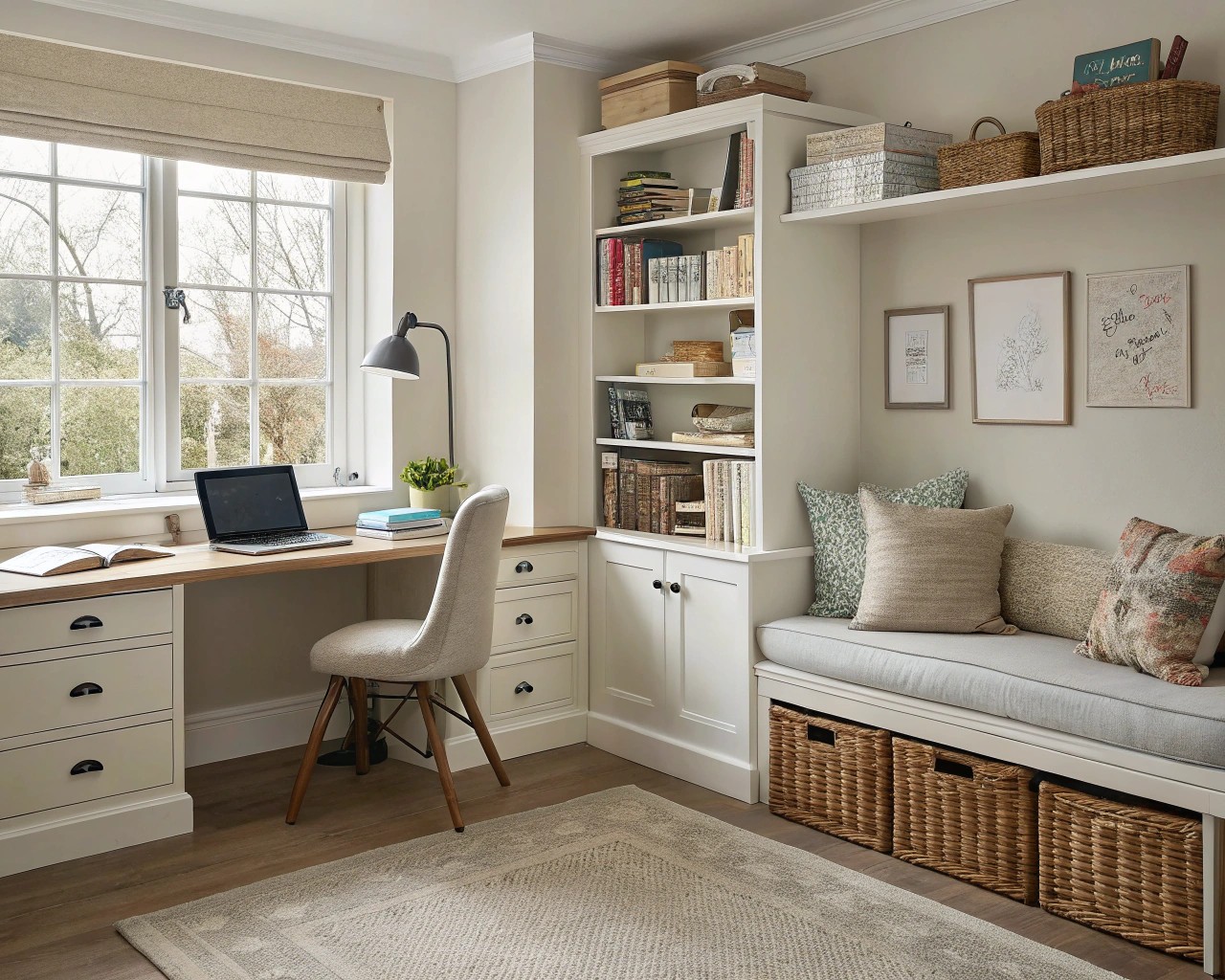
Living Areas That Multitask
Most college apartments feature combined living/dining/study areas that must serve multiple functions throughout the day. The key to adult sophistication lies in creating flexible zones that can transition seamlessly between activities.
Zoning Strategies:
- Area rugs: Define separate functional areas within open spaces
- Furniture placement: Create conversation areas even in small rooms
- Lighting zones: Different light sources for different activities
- Storage integration: Keep each zone’s supplies within easy reach
Bedroom Sanctuaries
Your bedroom should feel like a retreat from the stresses of academic life, not a continuation of them. Adult bedrooms prioritize rest and relaxation over study and storage, even when space limitations require some compromise.
Bedroom Sophistication Elements:
- Quality bedding: Invest in higher thread counts and coordinated colors
- Lighting control: Install dimmer switches or use lamps for ambient lighting
- Minimal electronics: Create phone-free zones for better sleep hygiene
- Personal artwork: Display meaningful pieces rather than generic posters
Bathroom Transformations
Often overlooked in apartment decorating, bathrooms offer some of the highest impact opportunities for creating adult sophistication. Small changes in this space create daily reminders of your evolved living standards.
Bathroom Upgrade Priorities:
- Attractive soap dispensers: Replace plastic bottles with glass or ceramic alternatives
- Coordinated towels: Invest in matching sets rather than mismatched collections
- Hidden storage: Use attractive baskets for extra supplies
- Plants or artwork: Add personality within moisture-safe parameters
Budget-Conscious Implementation
Phased Approach Strategy
Rather than attempting a complete transformation immediately, plan your apartment evolution in phases. This approach allows you to live with changes, understand what works, and avoid expensive mistakes while maintaining cash flow for other college expenses.
Implementation Timeline:
- Month 1: Assessment, decluttering, and basic organization
- Month 2: Lighting improvements and key furniture additions
- Month 3: Color integration through textiles and accessories
- Month 4: Storage solutions and system refinements
- Ongoing: Plant additions and personal touches
High-Impact, Low-Cost Changes
Some modifications deliver dramatic sophistication improvements for minimal financial investment. Focus your initial efforts on these high-return changes while you save for larger furniture investments.
Maximum Impact Modifications:
- Frame existing artwork: Transform posters into gallery-worthy displays
- Upgrade hardware: Replace basic drawer pulls and cabinet knobs
- Add textiles: Layer rugs, throw pillows, and curtains for warmth
- Improve lighting: Replace harsh bulbs with warm, dimmable alternatives
- Organize storage: Use attractive containers for visible storage areas
Investment Piece Selection
When budget allows for larger purchases, choose items that will transition with you beyond college life. Quality pieces that serve multiple functions provide better long-term value than trendy, single-purpose items.
Smart Investment Priorities:
1. Comfortable seating: A quality sofa or chair that will last years
2. Adequate lighting: Table lamps and floor lamps for layered illumination
3. Storage furniture: Pieces that organize while contributing to style
4. Window treatments: Curtains or blinds that improve privacy and light control
Through thoughtful application of these principles, your college apartment can evolve from a basic shelter into a sophisticated space that reflects your growing maturity and personal style. The key lies not in expensive purchases but in intentional choices that prioritize function, cohesion, and quality over quantity. Remember that creating an adult-feeling space is a process, not a destination—allow your apartment to evolve as your tastes and circumstances change throughout your college years.

